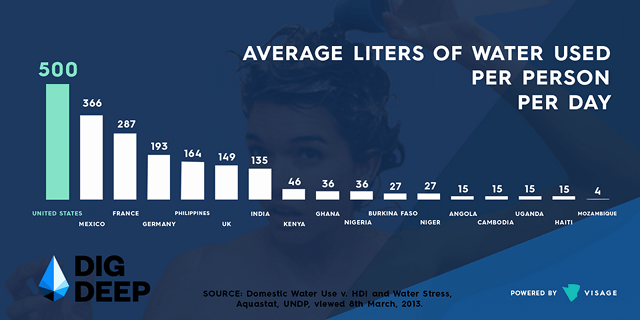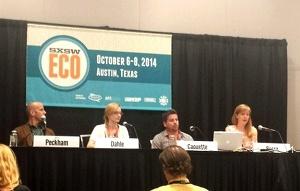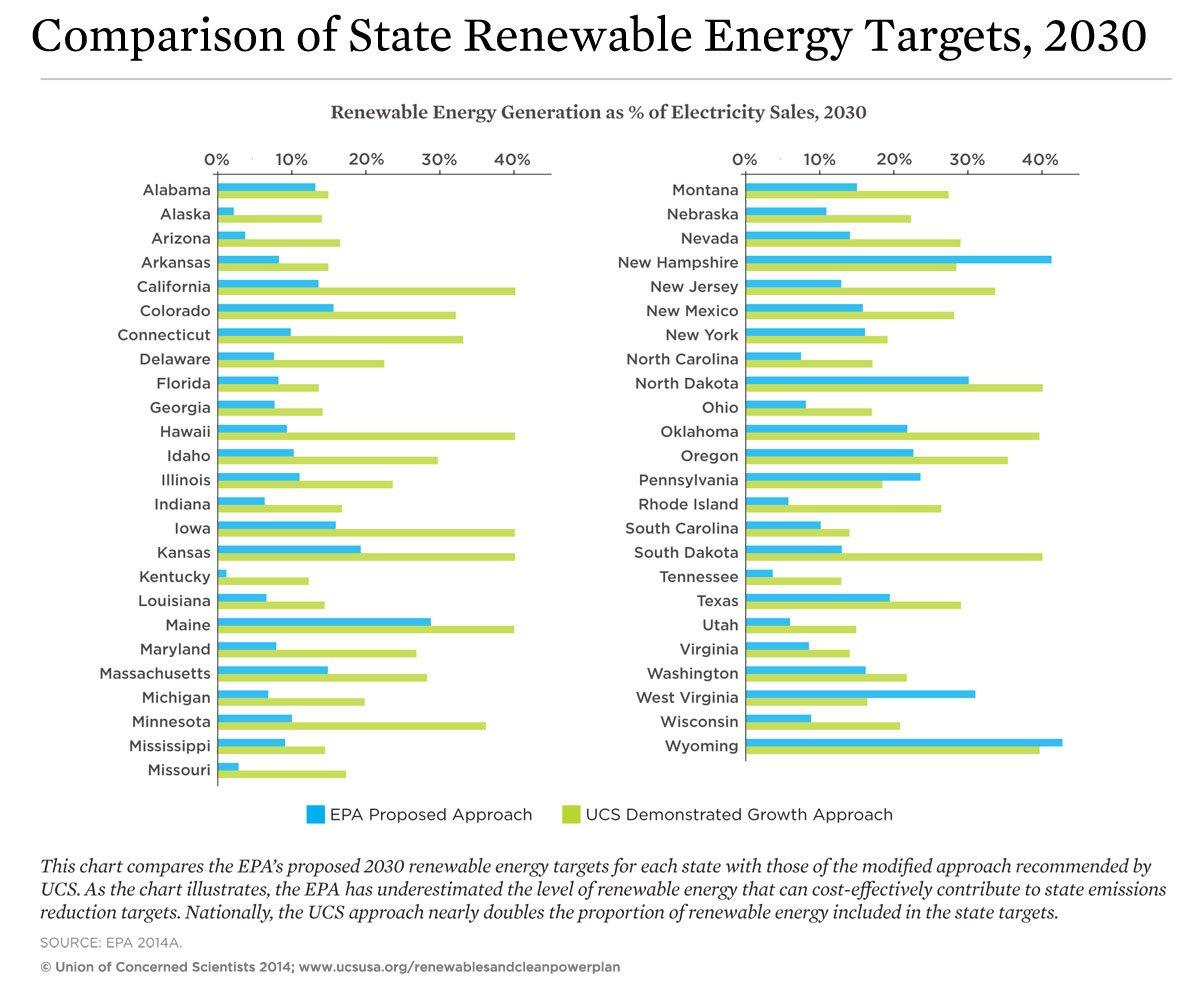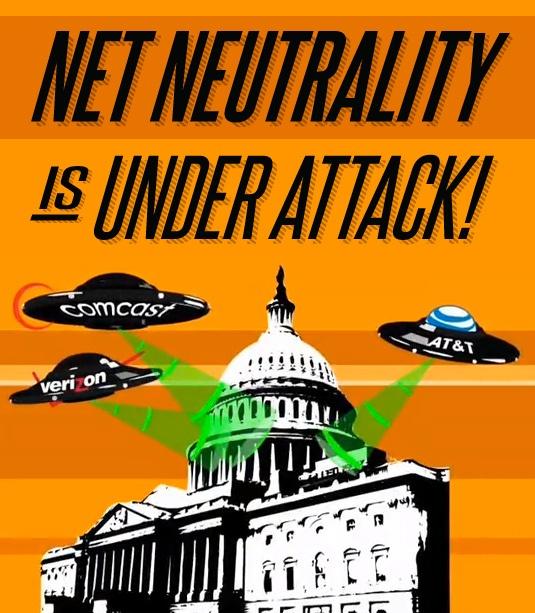Text Messaging Can Get You a Job (In Brazil)


Join TriplePundit, SAP and our special guests for a Twitter Chat about millennials and social entrepreneurship. Follow along at #SAPsocent on October 23 at 9 a.m. PST/Noon EST.
Despite massive growth throughout the years and big companies testing the waters for market opportunities, Latin America still faces historically high unemployment rates and a dismal GDP. For working-class Brazilians, the default means for finding employment -- newspaper ads and word-of-mouth -- are slow and ad hoc. However, finding work is now becoming as simple as responding to a text message, thanks to entrepreneur Jacob Rosenbloom, founder of Emprego Ligado.
Backed by high-profile investors including 500 Startups, Qualcomm and a new round of Series A funding to increase geographic expansion, Emprego Ligado is successfully taking over São Paulo as a virtual staffing firm that’s connecting blue-collar workers to millions of job opportunities each month.
Launched in 2011, Emprego Ligado serves as a job marketplace for working-class Brazilians with limited access to the Internet. Job applicants simply upload their resumes and filter job opportunities to the system via text message. The process takes as little as 2 minutes to complete, and accepted candidates are able to arrange interviews with potential employers all through the convenience of their mobile device.
I sat down with Rosenbloom via Skype to discuss his venture, the growth opportunities that exist in Brazil, and how he’s charting a new path for economic empowerment that affects on the ground environmental and quality of life issues for the country’s most vulnerable workers.
Here's an edited version of our conversation:
Triple Pundit: Tell me about yourself and your background.
Jacob Rosenbloom: I’ve been in Latin America for 10 years. I’m an engineer by training and graduated from Stanford in 2003. I’ve always been interested in Latin America. I grew up in a rural part of Oregon that was also a very highly populated Mexican community.
After I graduated from college, I worked for Lehman Brothers and Goldman Sachs. At the time, no one was having luck on Wall Street investing in Latin America. I lived in Mexico City for 2 years and then moved to São Paulo from 2004 to 2009 to continue working as an investor.
From an outsider’s perspective, when you look at Latin America, there is always frustration with limited growth potential compared to other markets. Typically, you’ll see 5 to 8 percent jumps in GDP in places like China, but it is not expected to see GDP growth in Latin America.
I went back to the U.S. in 2009 and worked for Endeavor — an NGO focused on stimulating entrepreneurship in emerging markets. During my time there I developed business models to serve middle- and lower-class people in emerging markets.
Emprego Ligado got started shortly thereafter with my two cofounders who are my best friends from Stanford. We all moved down to São Paulo together and founded the company. Because of the democratization of [the] cell phone, you can put together a business that has social impact but it is not a traditional social enterprise. The business model is highly profitable and has clear environmental and social benefits.
São Paulo has 22 million people. Everyone has a car. People will spend over 3 hours a day in traffic to get to the downtown area for work. Our thought: If we place people close to home, people can spend more time with their families, be more productive at work and stay longer in their jobs. There’s also little to no transparency about the labor market. Through Emprego Ligado we’re building a productive workforce, creating transparency around available salaries and enhancing people’s quality of life.
3p: What is it about the economic climate that has been cumbersome for businesses and entrepreneurs to expand within that market?
JR: It’s clear that there is a huge productivity problem in the workforce. At the base of the pyramid are the operational workers. It’s very rare that a management team coming into this market is focused on real-world problems. Most companies try to replicate traditional commerce models — to their peril.
3p: Why SMS over any other platform?
JR: Our approach through SMS is merely a matter of market standard. The cell phone market is an oligopoly. There are a total of four telecom operators. As a result, Brazilians pay more for services. No one has data plans. Only 20 million people have data plans (out of a total of 300 million cell phones).
Through our service we’re learning how people interact day-to day with technology and their habits with how they interact. We also understand their demographic profiles and their physical locations, which helps us target our job distributions to those that will have the easiest access to that particular job.
3p: Does Emprego share data and insights with the local government?
JR: Yes. Mostly municipal governments are interested in reducing traffic and helping local companies expand.
3p: Where do you plan to expand your technology next?
JR: For now, we have our eyes set on the next step being neighboring countries (Mexico and Columbia). I’ve lived in both of them and have built strong support systems.
We’ll also be expanding the team. We’re up to 40 people — a talented team of smart executives. We’re a 100 percent Brazilian company where everyone speaks Portuguese.
Our support network in Brazil has really made an investment. Those that previously were dubious about foreign entrepreneurs are starting to invest in our model. The exciting part is the top tier executives we get to work with and shaping best world practices for an emerging market.
3p: It may sound a bit cliché to ask, but do you feel that Sao Paulo could be the next Silicon Valley?
JR: First, let me give you a brief history: In late 2011, big waves of startups were getting funded in Brazil. Everyone kind of knew that 2014 to 2015 would present significant minority stakes and exit opportunities. There have been four exits announced in the past two months. There’s certainly insecurity in the market. Things happen slower here, but it’s been a great few months.
3p: Speaking of exit strategy, is this something that you and your team are preparing for in the future?
JR: My two cofounders and I are completely committed to the business. No plans to exit. There is a very clear need for our geo-technology market. We’ve only got excitement.
Image credit: Kenji Nakamura, Flickr cc
Sherrell Dorsey is a writer, social entrepreneur and advocate for environmental, social and economic equity in underserved communities. When she’s not obsessively learning how to decrease her carbon footprint, Sherrell contributes frequently on green design, sustainable architecture and environmental policy at Inhabitat.com. Follow Sherrell on twitter @sherrell_dorsey.
Vast Methane Cloud Confirmed Over the American Southwest


At first NASA scientists didn't believe it, thinking it was an instrument error. But then came the confirmation. They had found a Delaware-sized methane cloud over the American Southwest at the Four Corners. At 2,500 square miles, it is the largest concentrated area of methane emissions in the United States.
Methane, also known as natural gas, is a powerful greenhouse gas -- 20 times more potent than CO2.
The gas isn't coming from hydraulic fracturing well leaks, which are indeed a source of methane emissions. The data shows the Four Corners methane cloud pre-dates the fracking boom. So, it's not from fracking or cow farts. This methane cloud is believed to be coming from leaks from coalbed methane extraction.
Leaks. It's because of such inevitable leaks that it's worth taking it with a grain of salt when natural gas is billed as a solution to climate change for its lower CO2 emissions.
Carbon dioxide gets most of the attention in the fight against climate change. Human activity worldwide pumps about an additional 29 gigatons of CO2 into the atmosphere every year -- about 60 percent of which lingers there, building up year after year. CO2 accounts for about 80 percent of the greenhouse gas emissions in the U.S. And it can stay in the atmosphere for as long as 200 years.
Meanwhile, methane accounts for only 9 percent of U.S. emissions. The bad news is it's 20 times more potent as a greenhouse gas, pound for pound. Despite that I suspect the reason we're so focused on CO2 is that the stuff stays in the atmosphere for so long. Methane hangs around for just 12 years. Still, if we're looking to send the climate over the cliff and ignite negative feedback loops (such as methane-emitting permafrost melt), methane emissions are just the thing to pile on to an already dire situation.
The Four Corners methane cloud is emitting nearly 14.8 million metric tons of methane per year, and yet it's by no means the largest source of methane emissions in the United States. By itself it's nearly as significant as emissions from all the forestry in the United States (15 million metric tons/year). However, it's still dwarfed by such sources as energy (229.6 million metric tons/year), agriculture (117.2 million metric tons/year), or landfills (62.5 million metric tons/year).
More significantly, however, this vast methane cloud appears to be a byproduct of extracting natural gas from a coal bed. More specifically, it's coming from leaks in the process -- apparently huge leaks. While natural gas is billed as safer for the environment because of reduced CO2 emissions, it's worth taking a serious look at whether or not that reduction in CO2 is negated by an increase in the significantly more potent methane. Even with modern hydraulic fracturing, some researchers such as Dr. Anthony Ingraffea are suggesting well failures and leaks present a significant increase in methane emissions.
Dr. Ingraffea is a professor of engineering at Cornell University. He recently published a study showing that defects in oil and gas wells could in fact exacerbate greenhouse gas emissions -- and that modern wells are more likely than older wells to have these leaks and defects.
Between mounting studies showing methane leaks in fracking wells and this vast, newly confirmed methane cloud at the Four Corners, we're just starting to see the degree to which natural gas poses more of a climate threat than was previously understood. CO2 is just part of the story. We should proceed with extreme caution and skepticism.
Image credit: NASA/JPL-Caltech/University of Michigan
A Slow Smart City: Bangalore's $6 Billion Traffic Headache


India’s fifth largest city, Bangalore, deserves much of the credit and attention for India’s economic transformation the past 20 years. Home to massive information technology companies including Wipro and Infosys, the Bangalore metropolitan area contributes as much as one-third of India’s IT exports. Many global companies, including SAP, have long set up shop in Bangalore. Many of the technologies that are part of the foundation of the “smart cities” movement underway worldwide have a base in Bangalore.
But as in the case of other cities throughout India, being stuck in traffic gives the feeling one is anywhere but a “smart city.” The frustration in Bangalore is nothing new. An annual report by IBM ranked Bangalore highly in its 2011 “Commuter Pain Survey.” This city of eight million was lodged between Johannesburg and New Delhi, and faring worse than other cities notorious for snarled traffic, including Buenos Aires and Los Angeles. The impacts on local quality of life are all over the map, such as when ambulances take hours to move patients only a few kilometers across town to emergency rooms. But the toll Bangalore’s traffic has on workers gives cities a lesson on why cities have got develop more robust transportation plans in a crowded world: Quartz estimates the annual cost to local IT and business process outsourcing (BPO) companies to reach as much as US$6.5 billion annually. Considering the average salary of an IT or BPO employee in India, that sum is staggering.
Much of Bangalore’s congestion woes lies in the antiquated infrastructure of what was once a military garrison. The city suffers from a low road density, much lower than that of Delhi. Bangalore also lacks the extensive commuter rail system found in Mumbai. Add the fact the city became almost twice as dense since the early 2000’s, and the state of perpetual gridlock has been a threat to Bangalore’s continued growth and success.
Bangalore’s leaders have responded to the crisis, however, and comprehensive transportation plan is in the works. A new light rail system, Namma Metro, opened its first line in 2011 and another line started running earlier this year. That leaves only one-third of the 114 kilometers (71 miles) of the network yet to be completed. Bicycling is also a more viable option in Bangalore compared to other cities in India, and has become an increasingly popular way of commuting for those desperate to beat the traffic. Many commuters in Bangalore, however, are still commuting an average of two hours daily; the ratio of commuters who use public transportation versus their own private wheels is almost 1-1. Inertia only encourages more frustrated workers to take the roads on their own.
So what does a city do when it is grappling with a crowded population in a city built to handle only a sliver of the eight million who live there now? Bangalore’s planners are betting a multi-modal transportation system can offer relief to commuters. In addition to streamlining the bus system, expanding rail, and improving the outer ring roads that start to funnel commuters into the city, additional creative ideas are on the horizon. One of them is an expanded network of escalators and “skywalks,” similar to one that opened this summer over one of the city’s busiest streets. Workers who have a walk included in their commute waste time waiting for a few safe moments to cross the streets; more subterranean passageways and skywalks should alleviate headaches for pedestrians. Of course, as one visitor observed wryly, lanes in the streets would help as well.
Other plans, such as more footpaths, bike paths and pedestrian-only zones confront the challenge that real estate in Bangalore is out of sight. In sum, the plans will cost billions—but as Quartz’s writers have noted, gridlock is costing Bangalore millions annually. The struggles Bangalore has coping with success is hardly unique to India. There’s a message for cities worldwide should be obvious—the time to launch smarter transportation planning was yesterday.
After a year in the Middle East and Latin America, Leon Kaye is based in California again. Follow him on Instagram and Twitter. Other thoughts of his are on his site, greengopost.com.
Image credit: Wikipedia (Insanity Defined)
This is Water: Lessons From My '4 Liters Challenge'


On an average day, I waste a shameful amount of water. So do you. We all do, and we do it while hundreds of millions of people in other parts of the world live in “water poverty,” consuming less water in an entire day than most of us use flushing the toilet a few times.
I learned all of this when I decided to take DIGDEEP’s “4 Liters Challenge” -- a pledge to use a total of only 4 liters of water for one entire day. The challenge was not pleasant. Far worse than the experience was coming to terms with just how much water we waste.
Context
Does the 4 Liters Challenge sound hard? I actually wasn’t sure until I put it in context. First, most of us use nearly 4 liters of water -- in other words, all of the water allotted in the challenge -- every time we wash our hands or face. Most Americans use more than 400 liters of water (!) every single day, or 100 times what the challenge requires. A single toilet flush uses about 6 liters of water, and a mere three flushes amounts to more water than most other people in the world use all day to clean, cook, drink and bathe. The average dishwasher uses 23 liters of water, and running the water while you brush your teeth could waste 9 liters. The all important shower? Newer shower models use about 9.5 liters of water every minute, so a quick, five-minute shower uses about 47.5 liters of water and a 10-minute shower -- a little longer than the average -- uses (wastes?) almost 100 liters.
Access
The United Nations has explicitly recognized a human right to water and sanitation; yet, more than 800 million people worldwide live in “water poverty,” meaning they lack access to a sufficient quantity of water, or water of an adequate quality, to meet their basic needs. To put this in perspective, the World Health Organization suggests that a “sufficient” quantity of water is somewhere between 50 and 100 liters per person per day.
Juxtaposed against the amount of water our day-to-day activities consume, the statistics regarding water scarcity are startling. Almost 1 in 7 people lack a safe source of clean water. At any moment, half of all hospital beds in the world are full of people sick from dirty water, and 3.4 million people die each year from a water-related disease. The average distance that women in Africa and Asia have to walk to collect water is 6 kilometers (about 3.7 miles); for the roughly 885 million people in the world who live more than 1 kilometer from a water source, water use is often less than 5 liters a day of unsafe water. The basic water requirement for a lactating woman engaged in moderate physical activity is 7.5 liters a day. Together, unclean water and poor sanitation are the world's second biggest killer of children.
Experience
On to my 4 Liter “experience.” I had some difficulty getting started. I spent the morning of my intended start date in the emergency room with my 2-year-old daughter, who was struggling to breathe (she’s fine now); and then, I spent the entirety of the following day in bed with the stomach flu, getting up only to vomit -- I finally commenced the challenge on Monday. (Worth noting that, as I did not shower, have coffee or drink more than a large Gatorade for 24 hours on the day I was sick, I actually consumed less than a single liter of water the entire day. Of course, I don’t think this is what DIGDEEP had in mind...)
On Monday morning, all I wanted to do was guzzle a gallon of cold water and take a 20 minute shower and I could do neither. This pain was eased by the reminder that I was taking “a challenge” and not actually living in a place where I lacked access to an adequate and sufficient water source.
My water intake for the day was as follows:
- Instead of the typical seven- or eight-minute shower (which would use about 70 liters of water), I put 1.5 liters of water into a tea kettle, warmed it up, and then used that to approach something resembling cleanliness.
- Rather than brewing four cups of coffee (which would use about 650 ml of water), I pulled a single shot of espresso, using roughly 50 ml of water.
- I relied primarily on hand sanitizer throughout the day, washing my hands only twice (100 ml each time), and used a total of 500 ml of water to brush my teeth twice and wash my face once. Altogether, about 10 liters of water saved.
- After factoring in all of the above, I had about 2 liters of water leftover to drink, which seemed insufficient in my state of dehydration, but would probably have been otherwise manageable. (Adequate water intake for an average man is about 3 liters, per the Institute for Medicine.)
Unsurprisingly, I used all 4 of my allotted liters and saved the most water by not showering and not drinking an enormous amount of coffee (my two most cherished luxuries). In total, I probably avoided wasting close to 100 liters of water for the entire day.
Lessons
Mindfulness. To me, the real value in the 4 Liters Challenge, apart from raising money for much needed water projects and awareness of the issue of water scarcity, lies in the mindfulness it forces us to bring to our daily water use.Those of us in the “developed” world do not mindfully consume water -- “mindful consumption” of 400 liters of water a day is a contradiction in terms. However, when restricted to just 4 liters of water for an entire day, every water-related activity becomes an exercise in mindfulness and reflection upon how much water we waste and how terribly important water is as a resource. For example, waking up and heating a miniature container of water with which to wash, rather than running the shower for a few minutes before it gets piping hot and then standing in it for six or seven minutes because it’s probably the best part of the day, forces us to come to terms with how careless our daily shower practices are. Ditto the use of tiny amounts of water for hand-washing and tooth-brushing, never mind refraining from use of dishwashers and washing machines.
The point isn’t that we should all stop showering or washing our hands -- quite the opposite -- but that we could all pay a bit more attention to our water use. Don’t let the water run as frequently or for as long. Take shorter showers. Do the few, small things that can conserve the most of this, our most valuable resource. In other words, pay attention.
Availability, luxury, and convenience. When I got home from the ER with my daughter, we spent much of the day in a steamed-up bathroom to help her breathing (doctor’s orders). Of course, I generated the humidity in the bathroom by running the shower on its hottest setting for 30 minutes at a time, multiple times. Thankfully, it helped clear her airway, but it also used more than 250 liters of water each time. What do those living in water poverty do when the prescription for their sick child would require more water than they would otherwise use over the course of a few months?
Not only was I able to help my daughter breathe, I was also able to postpone the limitations on my own water use until a day or time that was more “convenient.” I took the day of her recovery to binge on caffeine and took a long, hot shower to wash away the stress. Convenience and luxury are two concepts foreign to those living in water poverty. The 4 Liters Challenge has instilled in me the hope that, each time I turn the faucet, I can remember that and remind myself: This is water; don't waste it.
Images courtesy of the DIGDEEP via Facebook
Sustainable Seafood at SXSW Eco: A Tale of Two Fisheries


This post is part of Triple Pundit’s ongoing coverage of the SXSW Eco conference. For the rest, please visit our SXSW Eco page here.
Ocean health issues took center stage at the 2014 SXSW Eco conference in Austin, Texas last week. On the second day of the conference, renowned oceanographer, explorer and author Sylvia Earle, who you may also know as the founder of Mission Blue, gave a keynote speech on her vision for more sustainable seas. Her speech was one of the most buzzed-about at the conference, and the subject definitely hit home.
The following day, a group of sustainable seafood experts assembled for a panel discussion on how networks are the future of fish. What do they mean by 'networks,' you ask? To put it simply: 200 million people directly or indirectly depend on fishing for their livelihoods, many in developing countries. In nations where infrastructure is limited and regulations lax -- and cost-effective, sustainable solutions are not readily available -- fishermen often choose unsustainable and even illegal catch methods in order to make a living.
For these fishermen, the only networks they know for catching and selling their fish are unsustainable. This contributes to the rampant overfishing of our oceans and the opacity of the seafood supply chain. But introducing more sustainable networks to fishermen and fishing communities around the world just may help solve the problem.
And it's a problem that's only getting more serious: Upwards of 80 percent of the world's fisheries are being fished at maximum capacity or are exploited -- and that only refers to the fisheries we can measure. So far, researchers have only been able to assess about a third of the world's fisheries due to infrastructure issues and lack of funds in developing nations. Meanwhile, about a third of all seafood is mislabeled in North America, either by species, origin or catch method, and 28 billion tons of illegal fish makes its way into the legitimate supply chain every year.
As Cheryl Dahle, CEO of Flip Labs and founder Future of Fish, put it: "We're missing a lot of information, and what we know isn't that great."
The two panelists sitting beside her, Hoyt Peckham and Brian Caouette, have each witnessed unsustainable fishing practices firsthand -- and know the repercussions all too well. Peckham, founding director of SmartFish, has been working with fishery communities in La Paz, on the Sea of Cortez in northwest Mexico, for more than seven years. He recalled blatant mislabeling at seafood restaurants in Mexico City, where fish caught using unsafe practices was sold as sashimi -- what he called "fraud at its most egregious." Meanwhile the Sea of Cortez, which explorer Jacques Cousteau famously called "the world's aquarium," has become so overfished that chefs and grocery stores are now forced to import their seafood. As Peckham put it, "That's just wrong."
In the Russian Far East, Caouette, director of the Sustainable Fisheries and Markets Program at the Wild Salmon Center, faces similar challenges. The region is about the size of the continental U.S. with only 5 million residents. In this remote area, Caouette said, illegal fishing happens "on a massive scale," and roe-stripping is a common occurrence. After using kill nets to block off an entire river, fishermen will harvest the females for their roe -- then leave the remaining fish to rot in the waterway or bury them in holes nearby.
He recalled witnessing the practice countless times in Kamchatka, where he works, resulting in significant damage to local ecosystems. But he notes that while poaching and dumping in this manner can seem nefarious, the situation is rarely black and white.
"Fish are kind of fine if you just let them do their thing," Caouette said. "These problems are human problems. As an ecologist, I had a pretty dramatic learning curve coming into these communities because it's all about social issues."Most of the poachers in the field are young guys, unemployed, who are just responding to incentives. They're selling to processors that are paying good money for that, and it's going to consumers that in many cases don't care or don't have the information to care."
These stories are similar to hundreds of other fisheries. The good news is: Fixing broken fisheries is possible, as Peckham and Caouette discovered on opposite sides of the world.
In La Paz, Peckham's organization, SmartFish, helped fishermen rediscover the local sand bass, which was once sold at a mere 50 cents per kilo. If caught and handled properly, sand bass can actually reach sushi quality. "You cannot even recognize that it's the same fish," he said.
By shortening supply chains -- and giving fishermen the education and resources they need to hand-catch the fish and handle it correctly -- Peckham and his team have seen significant revenue increases in the local fishing community. "Fishermen can earn considerably more by catching considerably less, which is our goal," he said.
In Kamchatka, reformed poachers are now on the side of conservation and prevention. After years of work, the community is recognizing what the problem is and realizing that there is a solution. Caouette and his team have established a new system of products, buyers and sellers -- creating revenue for local fishermen and preserving natural resources.
"Our approach is: We're not going to stop this type of thing," Caouette said. "We don't have the manpower; we don't have the ability to redesign the market. But we're trying to create essentially a separate supply chain -- working with local fisheries, supporting them to do traceability, to seek certification if that's the right goal, and then helping them to market their products to buyers that care about sustainability."
Dahle provided an interesting cornerstone to these two 'fish tales,' as Future of Fish focuses mostly on working with entrepreneurs. Over an 18-month research process, the organization identified specific inflection points in the seafood supply chain, Dahle said, and gathered groups of entrepreneurs around these inflection points.
By bringing entrepreneurs from all stages of the supply chain together, she continued, you begin to build a positive network -- not unlike the networks Caouette and Peckham have curated on a smaller scale.
"The idea was: The network that you build of entrepreneurs, those relationships wind up providing far more opportunities than we can envision at the start," Dahle said. "It also winds up being a much more effective lever for change than supporting just one business and putting all of your money in that one ship."
It's no question that repairing the world's fisheries will take time. Each panelist noted that it can take years to develop relationships with fishing communities, but it's a quest that's well worth taking. And, network by network, fishery by fishery, communities across the globe are beginning to see real change.
Image by Mary Mazzoni
Based in Philadelphia, Mary Mazzoni is a senior editor at TriplePundit. She is also a freelance journalist who frequently writes about sustainability, corporate social responsibility and clean tech. Her work has appeared in the Philadelphia Daily News, the Huffington Post, Sustainable Brands, Earth911 and the Daily Meal. You can follow her on Twitter @mary_mazzoni.
The Pathway to a Stronger Clean Power Plan


This past June, the U.S. Environmental Protection Agency introduced its Clean Power Plan – the Obama administration's strongest measure yet to avoid the risks of climate change by reducing greenhouse gas emissions. In a report released Oct. 14, the Union of Concerned Scientists (UCS) outlines a practical, effective way to strengthen the Clean Power Plan by delivering much greater cuts in power plants' carbon dioxide and GHG emissions.
Power plants are the largest sources of carbon dioxide and GHG emissions in the U.S., accounting for around one-third of overall GHG and 40 percent of national CO2 emissions. For the first time ever, the proposed Clean Power Plan would require existing U.S. power plant CO2 emissions to be reduced 30 percent from 2005 levels by 2030.
Building on the EPA's flexible, state-by-state approach to implementation, in its report UCS makes the case that much greater cuts in emissions could be realized – “especially by taking greater advantage of cost-effective renewable energy options.” In fact, U.S. states can produce nearly twice as much emissions-free, renewable electricity than the EPA calculates in the Clean Power Plan – and do so in a way that is affordable, UCS asserts.
Renewable energy: The key to a stronger Clean Power Plan
The Clean Power Plan sets out individual power plant emissions reduction goals on a state-by-state basis, by and large leaving it up to state governments to figure out and carry out ways to achieve them. The UCS outline for strengthening the Clean Power Plan and delivering deeper CO2 emissions cuts takes into account the latest market data and actual rates of renewable energy growth, as well as the state-by-state flexibility the EPA has built into the plan.
Following the recommendations outlined in its report, “the EPA could nearly double the amount of cost-effective renewable energy in their state targets – from 12 percent of total 2030 U.S. electric sales to 23 percent,” according to UCS.
“There is an urgent need to reduce heat-trapping gases, and power plants are about forty percent of the problem,” Ken Kimmell, UCS’s president and former head of the Massachusetts Department of Environmental Protection, was quoted in a press release.
“Fortunately, renewable electricity has been growing by leaps and bounds for the past five years and costs keep dropping. That’s great news and the agency should take full advantage of what’s been happening on the ground.”
Surprisingly, 17 U.S. states have enacted renewable energy policies that already require installation of more renewable energy generation capacity than the EPA calculates they will produce under the Clean Power Plan, UCS points out. By adopting its recommendations, the EPA could increase the CO2 emissions reductions achieved among existing power plants from 30 percent by 2030 to 40 percent by the same year, UCS highlights.
“The power plant rule is the single biggest thing the administration has done since fuel efficiency standards to reduce the emissions at the root of climate change,” Kimmell said. “The Obama administration wants to get it right and it’s clear they can do a lot more. The draft rule doesn’t fully recognize the remarkable progress states are making on renewables. The agency should feel confident that it can strengthen its requirements, while keeping electricity affordable and reliable, when it releases a final rule next June.”
*Image credits: Union of Concerned Scientists, "Strengthening the EPA's Clean Power Plan"
SXSW Eco Interview: Angela Mason, Chicago Botanic Garden


This post is part of Triple Pundit’s ongoing coverage of the SXSW Eco conference. For the rest, please visit our SXSW Eco page here.
Green jobs – any work in agriculture, research, service or fields that contribute substantially to environmental quality – have become an increasingly enticing opportunity. Beyond providing vital opportunities for personal growth and development, green jobs engage individuals in work that simultaneously can improve their lives and the communities in which they live.
The Windy City Harvest Apprenticeship is a great example of a program seeking to prepare people for green jobs. It's an offshoot of the Chicago Botanic Garden and annually enrolls 15 to 20 students in a nine-month classroom and hands-on certificate course in sustainable urban agriculture.
I had a chance to talk with the program's director, Angela Mason, in Austin last week:
3 Businesses That Give Back to the Environment


By Dennis Hung
Indisputably, large national corporations, as well as regional and locally owned businesses, play a pivotal role in economic development in the United States. However, they also contribute to ecological, environmental and natural resource destruction, which impedes the interaction between humans and their surroundings. Recent environmental issues, such as climate change, deforestation, loss of biodiversity and ozone depletion, continue to plague the nation and the world.
Fortunately, a number of companies are taking momentous and proactive initiatives toward environmental stewardship. Motivated to make a difference through impact avoidance, ecosystem restoration and natural resource protection, these companies are finding innovative ways to incorporate novel approaches in their business practices that foster a long-term vision of sustainability. Here are three of my favorites:
Water and ecology: Skydrop
Water is fundamental to life on this planet. More than 70 percent of the Earth’s surface is covered by water. But 97.5 percent is salt water; 70 percent of the remaining freshwater is frozen; and thus only 1 percent is accessible for humans, which makes water and water conservation a priority environmental issue.
The average American uses nearly 150 gallons of water per day, much of which goes down the drain. A common garden hose or sprinkler uses as much water in one hour as a family of four uses in one day (approximately 600 gallons). Skydrop, an innovator in water conservation, has developed the Skydrop WiFi Sprinkler Controller, a simple, cost-effective and energy efficient system. Not only does the WiFi Sprinkler Controller adhere to laws and regulations on water restrictions, but it also minimizes energy utilization and water consumption by conserving potable (drinkable) water sources and underground sources in aquifers. Fused with premium software and hardware, the features of the controller system include:
- Automatic adjustment to watering schedules to reduce wasteful watering
- Ability to calculate needed water as well as moisture lost each day
- Real-time monitoring of local weather data to cut down on redundant watering
The Skydrop Sprinkler Controller is vailable online or through Lowe’s Home Improvement at 1,750 stores in the United States, Canada and Mexico. Skydrop has been added to the list of devices that can receive a $150 rebate back from the government for residents in Nevada.
Fossil fuels and landfill: Subaru
Since the 1990s, Subaru of Indiana Automotive (SIA) has been a trendsetter toward environmental responsibility, and it continues to be the nation’s most environmentally friendly car assembly plant. It was the first plant to go smoke-free, to introduce an on-site solvent recovery system and to be designated a wildlife habitat. It was also the first manufacturing facility to reach zero landfill status.
Additionally, every year Subaru actively recycles 99.3 percent of its excess materials and ships the rest (0.70 percent) to the city of Indianapolis to help generate steam. From 2006 to 2009, Subaru of Indiana received the Environmental Protection Agency‘s Gold Achievement Award as a top achiever in the agency's WasteWise program to reduce waste and improve recycling, the EPA’s WasteWise Gold Achievement Award for Industrial Recycling, the EPA’s WasteWise Gold Achievement Award for Climate Change, and the EPA’s WasteWise Gold Achievement Award for Community Involvement.
Finally, Subaru’s Smartway Vehicles are the most fuel efficient all-wheel drive vehicles in the U.S., and Subaru offers partial zero emissions vehicles (PZEV) with 90 percent cleaner emissions than even some hybrid or alternative fuel vehicles.
Paper and energy: Bank of America
In spite of the surge in online banking, the banking industry uses an incredible amount of paper and energy in their day-to-day operations. Over the last few years, Bank of America has initiated a number of policy changes and installed various green business operations such as wind-harnessing facilities. The company has developed employee and volunteer programs.
BOA even committed $50 billion in 2012 to global climate change in order to reduce its environmental footprint. Its My Environment and Environment Ambassadors programs engage employees and volunteers to educate staff members on environmental issues at their workplace and in their communities. The Bank of America Tower, the fourth tallest building in the U.S., is the first skyscraper awarded the U.S. Green Building Council’s Platinum LEED certification for eco-friendly features, including water recycling, waterless urinals and a cogeneration plant onsite. The company also offers $3,000 cash-back bonuses to employees that purchase hybrid vehicles.
Images: 1) Flickr/aigle_dore 2) Skydrop 3) Subaru 4) Bank of America
Dennis Hung is a business and technology consultant. He's passionate about conservation and spends much of his time out of the office promoting conservation best practices.
Kering snaps into action with ITC crocodile collaboration


Luxury goods giant Kering (formerly PPR) and the International Trade Centre (ITC) have formed a new collaboration to develop a multi-year programme to support the monitoring and sustainable management of the trade in Nile crocodiles from Madagascar.
The programme’s goal is to support sustainable trade that contributes to economic opportunities, local livelihoods and the long-term conservation of crocodiles and their habitats.
Kering and the ITC will provide technical support and financial resources in collaboration with the Crocodile Specialist Group of the Species Survival Commission of the International Union for Conservation of Nature (CSG). The Madagascar Crocodile Conservation and Sustainable Use Programme (MCCSUP) will facilitate targeted activities in Madagascar to improve sustainable trade in crocodiles and help support the country’s regulatory obligations.
The MCCSUP will cover a range of projects that will deliver recommendations in a series of public reports that will drive the overall sustainability of the trade in Madagascar crocodile. This will include assessing the status of wild populations, monitoring wild egg collection for crocodile ranching operations, and examining options for enhancing benefits for local livelihoods from the trade.
“At Kering we are focused on supporting sustainable production systems across our global supply chain and ensuring sustainable sources of raw materials,” said Marie-Claire Daveu, chief sustainability officer and head of international institutional affairs at Kering. “As this new market for sourcing is opening up, we are pleased to be able to support the capacity building that will underpin the implementation of best practices in management of crocodile conservation, sustainable use and trade in Nile crocodiles from Madagascar.”
Pic credit:
© Martin Muller | Dreamstime Stock Photos
Why Environmentalists Should Care About Net Neutrality


By Hannah Miller
Environmentalism as a field has progressed over the decades by expanding analysis of new areas of our society, from mining policy to manufacturing to agriculture. Areas of human life that were once considered outside the purview of environmentalism are now central to our thinking about how to create a saner, more sustainable and just culture: legalizing backyard beekeeping or banning BPA in plastics, topics that weren’t even on the radar a few years ago.
In order for environmentalism to continue to progress, we must include a new plank as central to our work: an Internet that is sustainable, democratic, and that is structurally adapted to facilitate and speed up the world-wide transition from fossil fuel to renewables.
Our world, and the future of our movement, is dependent on a green Internet, for both the communications and political work we must do, and the coming economic transitions.
So what is the Green Internet? Well, when you talk about the Internet, at first you think of the physical infrastructure: billions of computers networked together and sharing files (including thousands in the “server farms” operated by the giants: Apple, Google, Amazon, etc.).
Then there are the phone and cable networks, wireless towers, and handsets and laptops where we all join this network. So far, environmentalism has addressed the impact of this physical infrastructure, mostly as a critique of energy consumption. But the Internet is so much more than wires and computers – to reduce it to this is like saying our power system is just a grid that transmits electricity, without discussing mountaintop removal at one end or catastrophic weather events the other. What passes through both sets of wires has dramatic consequences, on both ends of the cable. What content is allowed to pass through the Internet – what corporations are allowed to buy or sell, and what information voters and consumers receive – is the most important matter.
When environmentalists or sustainability pioneers do “media work” now, we are usually trying to activate the public through existing channels; we need to go further, and shape those channels itself as seriously as we are re-working streets to be more bike-friendly.
As a massively powerful and hopeful communications technology, the Internet is still new, so it is still being formed right now. Historically, media technologies from the telegraph to radio have followed a similar pattern: they are invented as non-commercial forms, used by a niche, but when they become popular are co-opted by established business interests.
The Internet has already started going this way, and in fact, this is perilously close to happening: the Federal Communications Commission is currently proposing to change the Internet drastically to bias it in favor of corporate power, incentivizing Internet providers like Comcast and Verizon to feature and promote the Shells, Walmarts, and FOX News of the world. If we want the Internet to remain the viable organizing and educational resource needed for the vast challenges ahead in transitioning to a renewable society and a life-based economy, then we have to ensure that it remain free, open, and accessible to all.
The Internet is not a given. It is far from guaranteed to remain in its present, open form, a form that is inherently open to new, sustainable businesses looking to compete on an open playing field.
Unfortunately, the Internet is regulated without anywhere near the scrutiny that environmentalists are used. In comparison to the Environmental Protection Administration – which has the word “protection” in its name and which works from the assumption the public interest is its first priority - the Federal Communications Commission is far more beholden to corporate power, generally divving up available resources amongst bidders in a manner similar to the oil and gas lease auctions that Tim deChristopher went to jail protesting.
At one “public hearing” in Philadelphia recently, FCC officials closed the doors, asked in advance for a list of who was going to be in the room, and explicitly said that net neutrality couldn’t be mentioned. Such cronyism at an EPA hearing on the Clean Power Plan would be met by virulent protests.
If the FCC succeeds in its plan to crush net neutrality – the operating principle that has allowed the Internet to have democratized so many spheres of human life – we will end up with an Internet custom-built to replicate the patterns of consumption, waste, resource depletion, and political powerlessnesss currently brought to you by BP, Coca Cola, and the diamond industry. The Internet service providers you rely on to go online – particularly AT&T, Comcast and Verizon – are spending millions to make this happen, so they can start offering fancy high-speed Internet packages to giant corporations to deliver your captive eyeballs.
There is hope. Tomorrow, the California Public Utilities Commission will be voting on whether to stand up for net neutrality or not. If you take two minutes to click through, you could add your voice and tell them that this matters:
If you are outside of California, then please add your voice to the Fight for the Future coalition on Net Neutrality, here: www.fightforthefuture.org
There is much more to be said about the shape of the Internet and the media as seen through an ecological lens, and I hope this can be the beginning of a conversation. If you apply the principles of biomimicry to the media then you can imagine a system of vast cultural biodiversity; Nature stores her vast library of history and technology in DNA that is available to every cell on the planet. Universal access to information is a basic principle of biology!
Ecology must include the Internet as a policy area, and sustainable business leadership should lend its support; legacy corporate power already has tremendous competitive advantages, and a free and open Internet is the one place that alternative and benefit corporations stand a chance at reaching consumers. To move forward, we must all help green the Internet.
Hannah is a writer, editor, and advocate, writing and editing for publications including Triple Pundit, the Los Angeles Times, Forbes, Shareable, and Salon. Hannah recently edited the new Biomimicry 2.0 handbook; Hannah served as program manager at ecoAmerica, a climate-change media nonprofit, and Cradle to Cradle, an NGO that helps manufacturers design sustainable products.